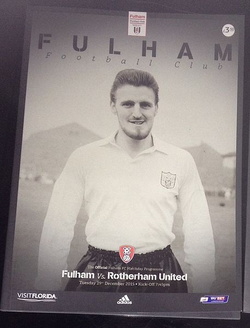 Let’s be honest, the money in football is obscene.
Let’s be honest, the money in football is obscene.
It has now got to the point where it’s impossible to think of it as real money. It’s like a weird, sporting version of Monopoly where players can buy all of the properties, the board you’re playing on, the house you’re playing in and the neighbourhood surrounding it.
We have become so accustomed to the insanity of the money in the game that we happily say things such as, “He’s not worth £30 million” as though we’re talking about Panini stickers.
But how did it get this far? What has influenced the amount of money that players are paid over the years and who are the highest paid players in the land?
Not all of those questions are easy to answer, of course, but we’ll try our hardest to give you some clue about how we went from football being a game that local lads played in the park with their mates to a sport that makes multi-millionaires out of even the most sparsely of talented players.
History of Football Wages

In 1893 it was proposed by Derby County that players should be paid a maximum of £4 per week. It didn’t pass then, but the rule was imposed for the start of the 1901-1902 season. This led some players, who were earning as much as £10 per week, to abandon the Football League in favour of the Southern League, which had no such restrictions. After the First World War the FA decided to increase the maximum wage to £10.
Over the following few decades the maximum wage dropped but then increased exponentially. It was £14 in 1951, £15 in 19553, £17 in 1957 and rose to £20 in 1958. Well-known football television personality and Match of the Day presenter Jimmy Hill was the President of the Professional Footballer’s Association and campaigned to have any notion of a maximum wage scrapped; something which he archived in January of 1961. His Fulham teammate and the captain of England, Johnny Haynes, became the first player to be paid £100 per week.
Once the notion of a maximum wage was scrapped it became only a matter of time before the money paid to footballers would reach silly levels. Football has long been the national game in England and as long as thousands of people wanted to watch it then clubs would want to attract the very best players they could. When Nottingham Forest became the first team to buy a player for £1 million upon signing Trevor Francis in 1979, they also made Peter Shilton the best paid player in the country on £1200 per week.
By 1994 that had risen by nearly ten times, as Chris Sutton signed for Blackburn and was paid £10,000 per week. The following year the Bosman ruling declared that out-of-contract players could move free outside the duration of their contract and so they were able to demand even higher wages. By 2001 Sol Campbell was able to demand £100,000 per week to play for Arsenal. In 2010 Carlos Tevez became the first player to earn £1 million per month, or £286,000 per week, when he signed for Manchester City.
Of course, those figures have been blown out of the water in more recent years, especially since the Saudi League began tempting world class players across to their part of the world with contracts that football teams in Europe can’t get close to.
Highest Paid Players 2021/22

Now that we know how wages grew and grew rapidly, we can have a look at the best paid players in Europe and beyond.
The thing to bear in mind here is that these wages are in a constant state of flux, as we can see by first looking at the top earners in 2021/22, and comparing that with the top earners in 2023/24 – just 2 seasons later.
It’s also worth bearing in mind that players earn a lot more than just their wage thanks to image deals with sports companies and so on, so wages are not a player’s only income.
For our purposes though, the table below shows the top 15 best paid players in the world for the 2021/22 season,
| Player | Club | Weekly Wage | Yearly Wage |
|---|---|---|---|
| Lionel Messi | Barcelona | £960,000 | £49.9 million |
| Neymar | PSG | £606,000 | £31.5 million |
| Luis Suarez | Atletico Madrid | £575,000 | £29.9 million |
| Gareth Bale | Real Madrid | £500,000 | £26 million |
| Kylian Mbappe | PSG | £410,000 | £21.3 million |
| Kevin De Bruyne | Manchester City | £400,000 | £21 million |
| Cristiano Ronaldo | Manchester United | £385,000 | £20 million |
| Eden Hazard | Real Madrid | £381,000 | £19.9 million |
| David De Gea | Manchester United | £375,000 | £19.5 million |
| David Alaba | Real Madrid | £359,000 | £18.6 million |
| Antoine Griezmann | Barcelona | £356,000 | £18.5 million |
| Robert Lewandowski | Bayern Munich | £350,000 | £18.2 million |
| Jadon Sancho | Manchester United | £350,000 | £18.2 million |
| Raphel Varane | Manchester United | £340,000 | £17.6 million |
| Romelu Lukaku | Chelsea | £325,000 | £16.9 million |
You’ll notice that a lot of the players tend to play for the same clubs. That’s because they’re the only ones rich enough to pay the players the wages they demand. Often players will also have clauses in their contract saying that they must be the highest paid player at a club, so if a club sign someone on the same wage as their ‘star’ then said star’s pay packet must receive an increase.
It’s also worth bearing in mind that the average wage for Premier League players in 2021/22 was £3.96 million per year, or roughly £205,000 per week – back in 2015 it was £1.7 million per year or roughly £39,500 per week so you can see how quickly it has grown. They may not make it onto this list, but even the average footballer doesn’t do too badly in the grand scheme of things…
Highest Paid Players 2023/24
 A quick look at the table below and you will see that wages at the top end have increased dramatically, and that is down to the emergence of the Saudi Pro League, backed by all of that oil money held by the various princes over there.
A quick look at the table below and you will see that wages at the top end have increased dramatically, and that is down to the emergence of the Saudi Pro League, backed by all of that oil money held by the various princes over there.
The highest wage in football has risen by 246% thanks to Cristiano Ronaldo’s move over to Al Nassr, although as you move further down the list the increase gets significantly smaller.
In 15th place, Romelu Lukaku’s £16.9 million per year in 2021/22 has only increased 15%, with Erling Haaland stepping into his spot on a wage of £19.5 million at Man City. So the massive money for the most in demand players is distorting the average.
| Player | Club | Weekly Wage | Yearly Wage |
|---|---|---|---|
| Cristiano Ronaldo | Al Nassr | £3.32 million | £173 million |
| Neymar | Al Hilal | £1.65 million | £86 million |
| Karim Benzema | Al Ittihad | £1.63 million | £85 million |
| Kylian Mbappe | PSG | £1.19 million | £62 million |
| Lionel Messi | Inter Miami | £1.05 million | £55 million |
| Riyad Mahrez | Al Ahli | £865,000 | £45 million |
| Sadio Mane | Al Nassr | £673,000 | £35 million |
| Jordan Henderson | Al Ettifaq | £653,000 | £34 million |
| Oscar | Shanghai Sipg | £576,000 | £30 million |
| Kalidou Koulibaly | Al Hilal | £576,000 | £30 million |
| Harry Kane | Bayern Munich | £404,000 | £21 million |
| N’Golo Kante | Al Ittihad | £404,000 | £21 million |
| Toni Kroos | Real Madrid | £402,000 | £20.9 million |
| Kevin De Bruyne | Manchester City | £400,000 | £20.8 million |
| Erling Haaland | Manchester City | £375,000 | £19.5 million |
You will notice that all of the highest paid players in 2021/22 were at clubs in either the England, Spain, France or Germany; whereas in 2023/24, eight of the fifteen highest paid players in the world work in the Saudi Pro League, one is in China, and one is in America. That leaves European clubs paying just 5 of those 15.
What’s more, every single one of those big money players plying their trade in countries not exactly famous for their footballing success, are over 30 years old. Ronaldo was 39 during this season, Messi and Benzema were 36, so it really is a case of foreign money buying in world class players to bring attention to their clubs. Whereas for the players, it is a chance for a massive payday before in a low quality league where they can still boss the pitch before they eventually retire.
